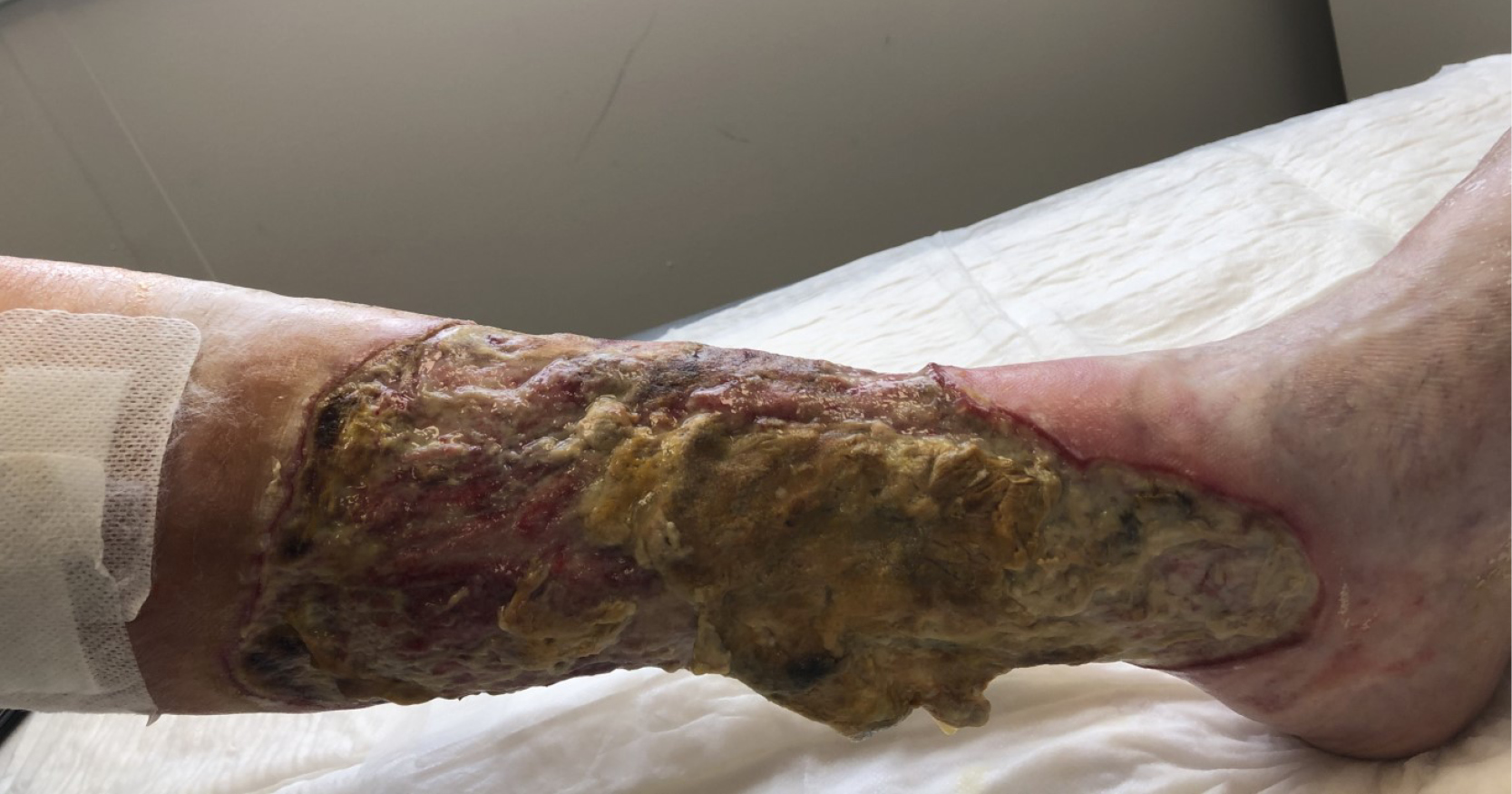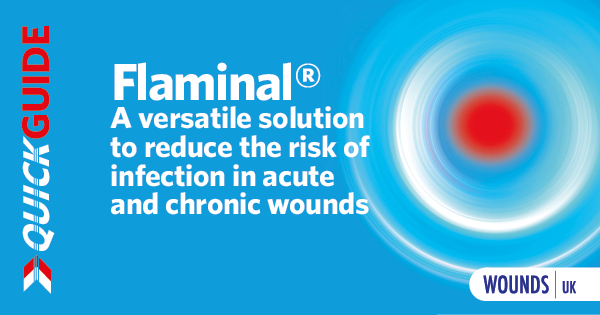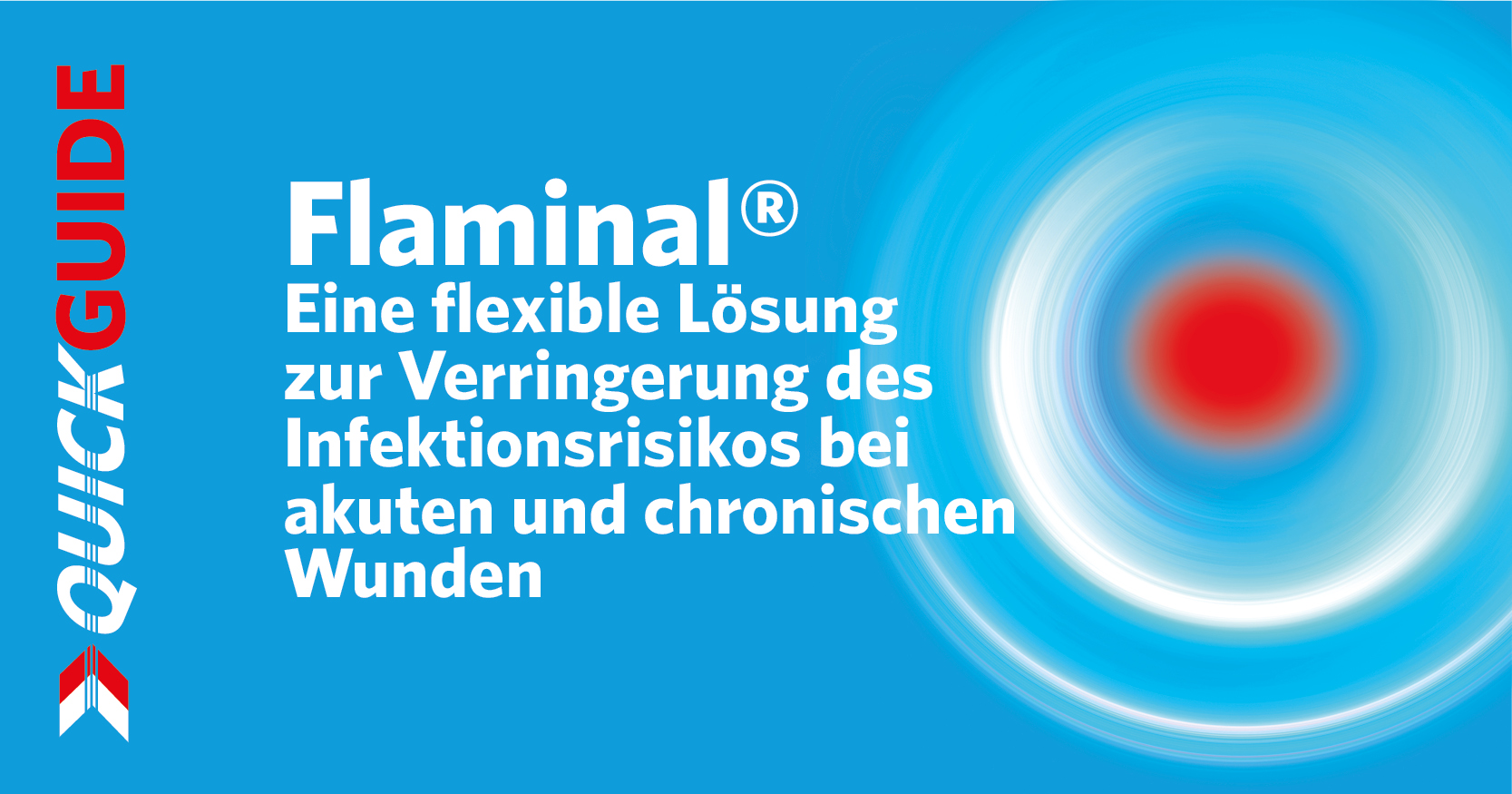Chronic (hard-to-heal) wounds represent a worldwide health issue, and it is acknowledged that biofilms colonise most hard-to-heal wounds (Malone et al, 2017). Biofilm protects associated microorganisms from antimicrobial agents, and the targeted treatment of biofilms has a beneficial impact on wound healing (Bianchi et al, 2016; Schultz et al, 2017). Consequently, wound care products, and protocols such as Wound Hygiene (Murphy et al, 2019), are becoming increasingly targeted towards antibiofilm activity. This is key in wound debridement, where strategies are required to remove devitalised tissue and disrupt and remove biofilm.
Modes of action of debridement procedures guide selection of test methods
The modes of action of an ideal wound debridement procedure are typically (i) softens or removes devitalised tissue and (ii) disrupts biofilm, kills microorganisms and then removes the debris. These actions aim to remove barriers to healing in the wound such that healing can proceed. In the literature, there are various laboratory methods that could be used to assess these factors. However, currently there are no standard test methods for wound debridement devices or procedures.
When considering a laboratory method, there is often a trade-off between clinical relevance and the type of test method available. If standard test methods do not exist, then standard methods can be adapted, or new methods can be developed by laboratories. In both cases, these methods should be validated (Bowler and Westgate, 2022). Data from standard or validated test methods allow benchmarking of new and existing antibiofilm technologies, which enables healthcare professionals in the selection of the most appropriate treatment options. Laboratories can also be accredited in their ability to perform such standard or validated test methods, e.g., by the UK Accreditation Service (UKAS), who can award International Organisation for Standardisation (ISO) 17025 accreditation.
This report explains the importance of using validated test methods while striving for clinical relevance, so that laboratory data can be used to compare the performance of different wound debridement technologies.
The importance of test method validation and accrediation
When test methods gain accreditation, such as UKAS accreditation for ISO 17025, it provides confidence that the method is reproducible between laboratories and scientists. The key stage of accreditation is the validation of the test method. The test method must be demonstrated to be robust with appropriate precision (repeatability, reprodicibility), via test method validation. This provides confidence that the conclusions drawn are valid and comparable.
Table 1 compares some commonly used biofilm test methods that are standard test methods, or adapted and validated test methods, that may be considered for the assessment of the antibiofilm performance of debridement procedures. Microbiology experiments are widely excepted as labour intensive, therefore Table 1 also shows the throughput of the test methods (defining how many samples can be tested concurrently) along with their accreditation statuses and relevance to clinical debridement.
A study to demonstrate the importance of test method validation
ChloraSolv® Wound Debridement Gel (RLS Global, Sweden; distributed by Convatec, UK), is a 0.45% hypochlorite gel of high pH. It aids debridement of wounds by softening devitalised tissue and providing antimicrobial activity. The antibiofilm activities of ChloraSolv were examined to provide comparative data to assess performance against other debridement techniques (Metcalf et al, 2023). When tested in an adapted standard test method (MBEC; Table 1), ChloraSolv showed notably greater antibiofilm activity compared to an antimicrobial wound irrigation solution against Staphylococcus aureus and Pseudomonas aeruginosa biofilm. However, such a test lacks clinical relevance (Table 1).
Research methods can be developed that challenge products against clinically relevant parameters such as resistant pathogens, extended durations and more complex culture media or biofilm growth substrate, which can result in complex, mature biofilm. The methods can also consider how the product will be used clinically, therefore additional steps that mimic clinical use can be added, such as application of solutions in soak form, irrigation rinse steps, or use with a physical debridement tools. These were some of the considerations that the Convatec’s Research & Development, Microbiology Laboratory team considered when adapting an original in-house test method, which historically had been used for assessing antibiofilm performance of wound dressings (Bowler & Parsons, 2016), to further challenge debridement procedures. This test method was then validated by Perfectus Biomed Group, now part of NAMSA, an independent laboratory (Metcalf et al, 2023).
In brief, methicillin resistant Staphylococcus aureus (MRSA) or multidrug-resistant Pseudomonas aeruginosa biofilm was cultured on gauze pieces in shaking flasks at 35±3°C for 48 hours to allow mature biofilm to develop (Figure 1). The biofilm-colonised gauze was processed to remove loosely adhered bacteria then transferred to the lid of a sterile contact plate for the treatment (Figure 2). The method was validated by challenging the following variables:
Ensuring minimum differences are observed in results by testing performed (n=3 replicates) on three separate occasions by an operator (repeatability — within test)
Comparative assessment when the above testing is pefromed by multiple operators (robustness)
Comparative assessment between operators and occassions, when the use of different batches of media, equpment and prepared inoculums of the challenge organsims were used (repeatably precision and ruggedness).
In addition, as some of the products under test contained active antimicrobials, neutralisation validation was included in the test method validation. This part of the validation ensures that once a treatment timepoint has finished, a neutralisation fluid can stop any further antimicrobial activity.
This test method validation approach means that the products and procedures used in the validated test method have been challenged in a complex model, that can provide robust and reproducible data generated by a laboratory.
Summary
In vitro biofilm test methods are used in wound care product development to meet commercial and regulatory requirements. Historically, standard microbiological testing focused almost exclusively on planktonic bacteria (free-floating, as opposed to biofilm), and as such these test methods may underestimate the quantity of active agent required to effectively reduce microbial biofilm. Standard test method adaptations are effective when looking to mimic a wound scenario more closely, however, any adaption to a standard method means that validation is required to ensure that the method will continue to produce reproducible and robust results (Bowler and Westgate, 2022).
Method validation is an important requirement for any scientific experiment/test and the confidence in the validation and subsequent data generation can be increased using accredited testing laboratory. Using standard, validated and accredited test methods can collectively provide robust, reproducible and clinically relevant data that can be used with confidence to support product development or use in-market. It can also be used to submit data to regulatory bodies for additional claims or to have meaningful discussions with clinicians about the mode of action and efficacy wound care products, such as debridement tools.






